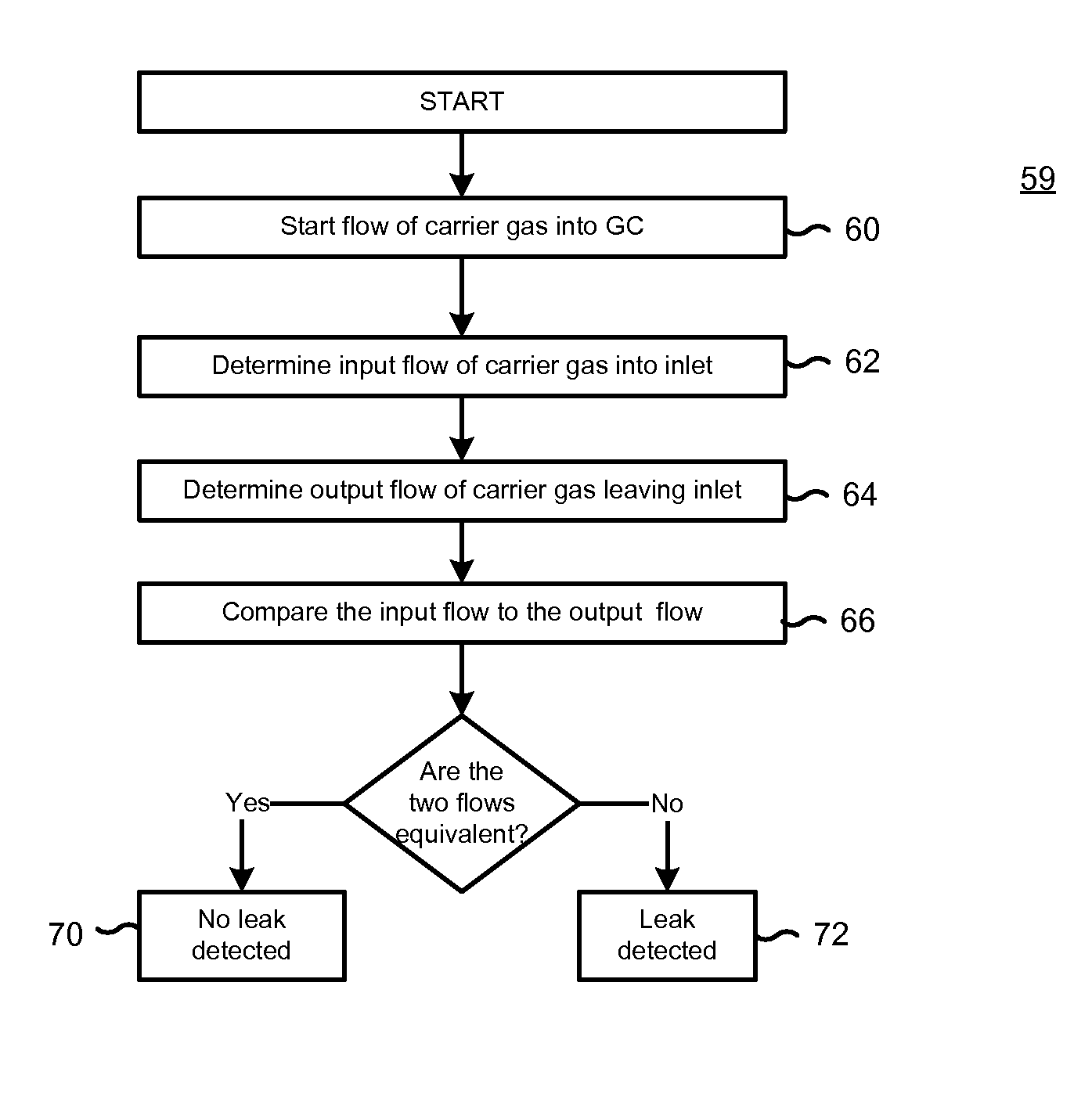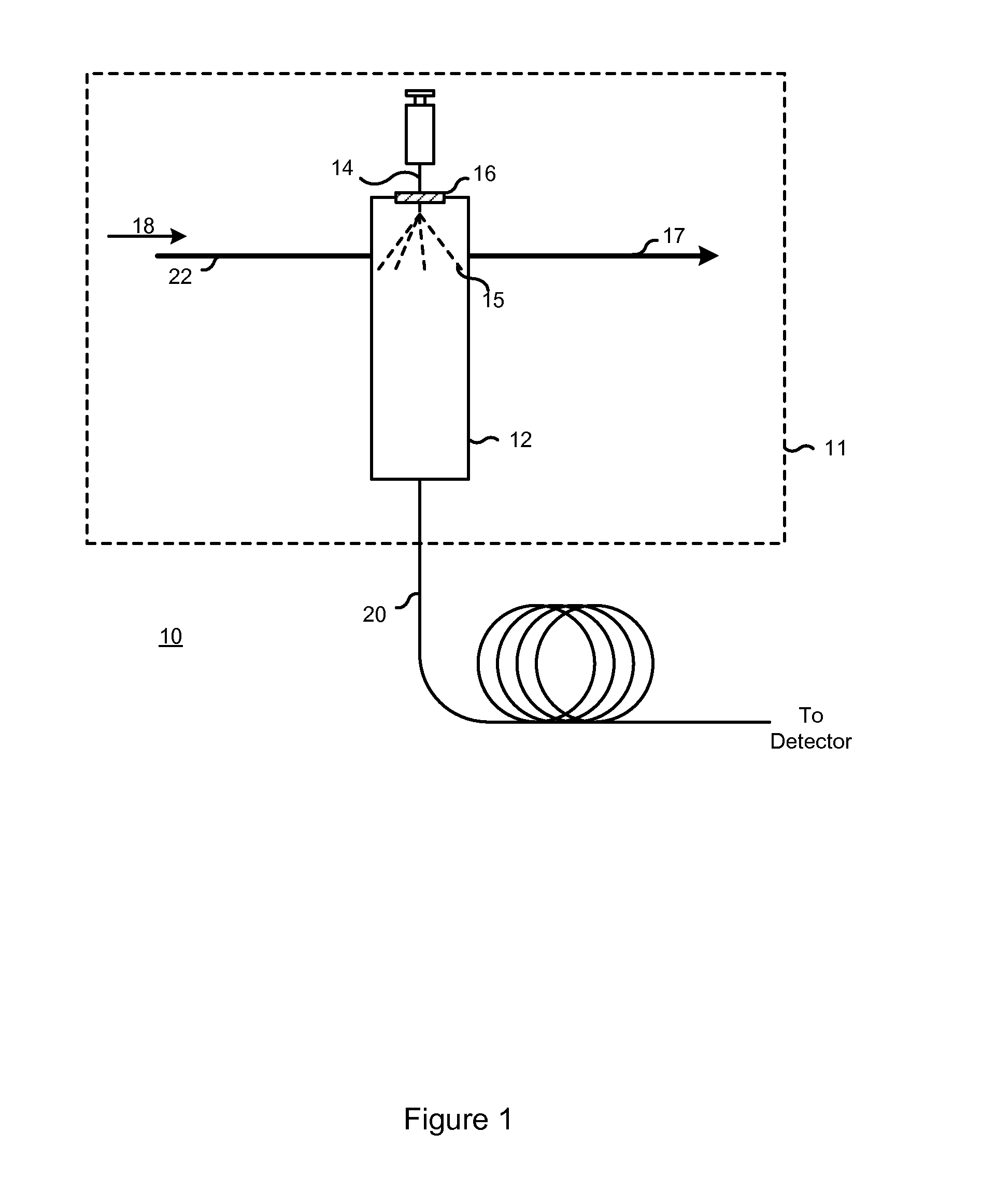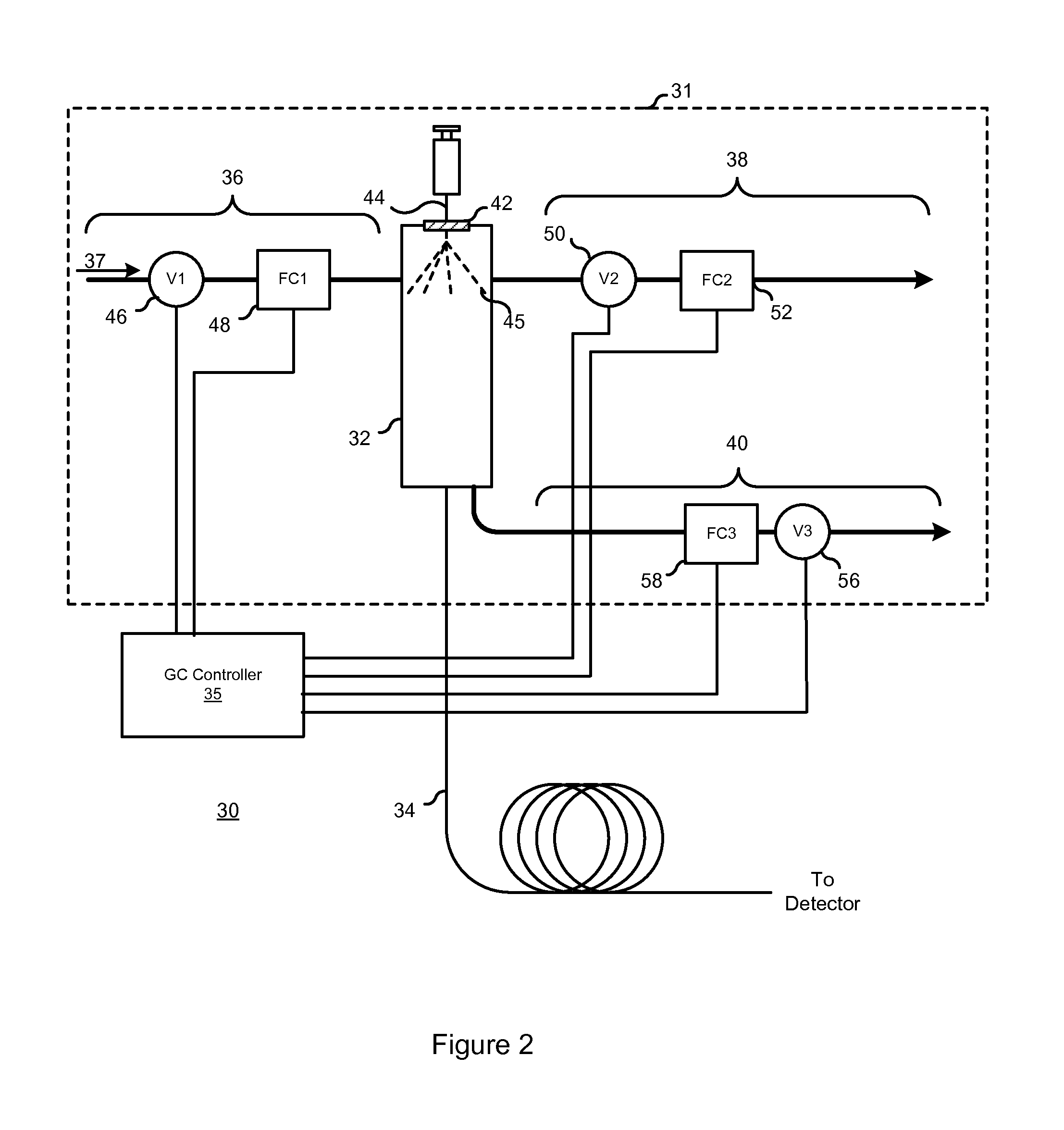Pneumatic testing for gas chromatograph inlet
a gas chromatograph and gas chromatograph technology, applied in the field of gas chromatographs, can solve the problems of deformation of the ability to reseal the holes formed by the needle, and prone to leakage of the septum b>16/b>
- Summary
- Abstract
- Description
- Claims
- Application Information
AI Technical Summary
Problems solved by technology
Method used
Image
Examples
Embodiment Construction
[0015]FIG. 2 shows a schematic diagram of a portion of a gas chromatograph (GC) 30. The GC 30 includes a GC inlet 31 that leads to a column 34, and a GC controller 35 for controlling the GC 30. The GC 30 includes other components that are not shown here, to avoid unnecessarily complicating the figure and the discussion below.
[0016]The GC inlet 31 includes an inlet body 32, an input branch 36 for bringing carrier gas 37 into the inlet body 32, a septum purge branch 38 for exhausting carrier gas 37 from the inlet body 32, and a split vent branch 40 which also exhausts carrier gas 37 from the inlet body 32.
[0017]The inlet body 32 is covered by a septum 42. A needle 44 is inserted through the septum 42 to inject a sample 45 into the inlet body 32. The inlet body 32 vaporizes the sample 45, which is then carried by the carrier gas 37 through the column 34 to a detector (not shown). A portion of the carrier gas 37 flows underneath the septum 42 and out of the inlet body 32 through the sep...
PUM
| Property | Measurement | Unit |
|---|---|---|
| pressure | aaaaa | aaaaa |
| pressure | aaaaa | aaaaa |
| gas chromatograph | aaaaa | aaaaa |
Abstract
Description
Claims
Application Information
 Login to View More
Login to View More - R&D
- Intellectual Property
- Life Sciences
- Materials
- Tech Scout
- Unparalleled Data Quality
- Higher Quality Content
- 60% Fewer Hallucinations
Browse by: Latest US Patents, China's latest patents, Technical Efficacy Thesaurus, Application Domain, Technology Topic, Popular Technical Reports.
© 2025 PatSnap. All rights reserved.Legal|Privacy policy|Modern Slavery Act Transparency Statement|Sitemap|About US| Contact US: help@patsnap.com



